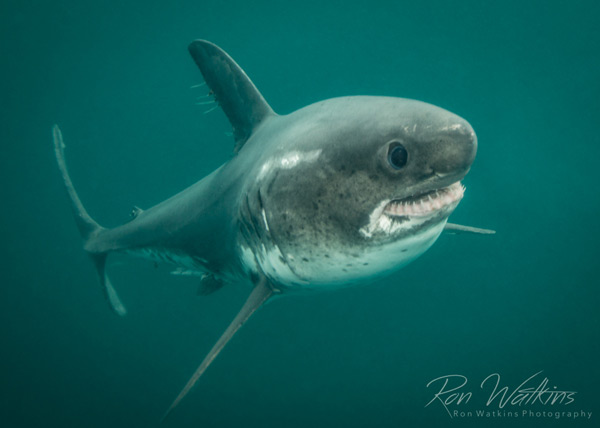Ron Watkins: Salmon Shark - Behind the Shot

Ron Watkins recently shared a fantastic shot of a Salmon Shark (Lamna ditropis) on the Wetpixel Facebook page, and it got a lot of attention since these are incredibly hard sharks to shoot - skunking many an underwater photographer. We asked him to share how he got the shot and the settings behind the shot with the Wetpixel Community. Here is his story.
The Elusive Salmon Shark (Lamna ditropis)
If you are looking for a predictable nature photography experience where getting “the shot” is guaranteed, then salmon shark photography is not for you. I have known a lot of really talented photographers that have spent multiple weeks and multiple trips in search of these rarely seen sharks, only to walk away empty handed. These sharks, which are species of mackerel shark, are usually found in the northern Pacific Ocean. Your best chance of seeing these apex predators is in the Prince William Sound of Alaska, but finding them can be difficult, as the weather has to cooperate, and the conditions have to be just right so that you can locate them by looking for the tips of their dorsal fins breaching the surface. These sharks are extremely shy and skittish, so even if you are fortunate enough to locate a salmon shark, only the right ‘player’ will allow you to enter the water with them and stay around long enough for you to attempt a photo. To make matters even more challenging, the water is usually frigid and a milky greenish-blue color, which typically makes for poor visibility of less than 3 meters. Because of these extremely challenging circumstances that have to align, photographing salmon sharks have almost become an urban legend of sorts.
In the summer of 2016, I ventured to Ravencroft Lodge outside of Valdez and went in search of my unicorn with Boone Hodgin of Alaska Sharks, one of the leading experts on locating salmon sharks. When Boone first arrived at Ravencroft over a decade ago, he tells me you could see hundreds of salmon sharks in this area and spot their dorsal fins right from the lodge, but now, due in part to charter fishing, their numbers have declined drastically and these sharks are becoming increasingly difficult to locate. I learned this first hand last summer after a week of trying and walking away with only a few photos of a fin on the surface and a shark under the surface taken from the boat. Regardless, this was one of my best photography adventures because I was able to photograph the diverse Alaskan marine life including massive jellyfish blooms, the annual migrating salmon in nearby stream, vast plumose anemone forests, and a multitude of Prince William Sound’s macro life. On the surface, hunting bald eagles, sea otters and seals also provided some unique photo opportunities.
I returned in June, 2017 for a second chance at the salmon sharks, but had realistic expectations. The group at the lodge the week before had no photographs to show for their effort in the cold and rainy weather. But on the morning of our first day, the water was like glass and there was no wind or rain, so we set out in search of sharks. Within 5 minutes we saw our first shark and within an hour we were in the water with 2 salmon sharks and I got my first photos in relatively clear 10 meter visibility. On day two the action was even better with two separate in-water interactions with the sharks, one lasting nearly 50 minutes with 4 sharks between 2-3 meters long. Just when we thought we had cracked the code on these illusive beasties, the weather changed and the sharks went back to being elusive for the remaining 3 days of our trip with only dorsal fin photographs captured. Even though my time with these sharks was limited, I am so grateful for this unique experience and the adrenaline filled time I had in the water with these beautiful animals. And of course, I will forever cherish having had the opportunity to capture some incredible photos of this elusive underwater unicorn.
Nikon D800 with 16-35mm (at 29mm) lens in a Sea&Sea Housing with a 230mm Zen dome port and Dual Sea&Sea YS250 strobes (1/4 power) - ISO 400, F/11, 1/200
Find more of Ron Watkins’ work here.